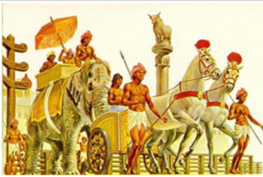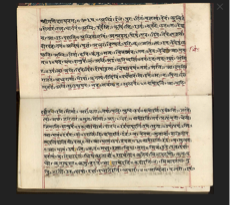Sign up for FlowVella
Sign up with FacebookAlready have an account? Sign in now
By registering you are agreeing to our
Terms of Service
Loading Flow

📍The Aryans were polytheistic. Their chief god was Indra, the god of war.
📍They also honored animal deities such as monkeys or the snake god.
📍Some religious thinkers believed in Brahman, a single spiritual power that existed beyond the gods and resided in all things.
📍Mystics are people who seek direct communication with divine forces. Aryan mystics practiced meditation and yoga.
📍They also maintained a strong oral tradition.
📍They memorized and recited ancient hymns, including two long epic poems, the Mahabharata and the Ramayana.

📍During the centuries between 2000 B.C and 1500 B.C., waves of nomadic people migrated slowly from Central Asia.
📍They built few cities leaving few artifacts. Knowledge of the Aryans comes from the Vedas, a collection of hymns, chants, ritual instructions, and religious teachings.
📍This period from 1500 B.C. to
500 B.C. is called the Vedic Age.
📍The Vedas portray the Aryans as fierce warriors who enjoyed food, music, and chariot racing.
📍The Aryans gradually grew out of their nomadic life and settled into villages.
📍By about 800 B.C., they learned to make tools out of iron.
📍Tribes were led by chiefs called rajahs.
The Aryan Civilization:




